Kendrick Lamar stands as a titan in the rap world, his journey to the top marked by unparalleled lyrical prowess, innovative songwriting, boundless creativity, and a deeply insightful perspective. His discography is a masterclass in balancing introspection with sharp social commentary, seamlessly weaving narratives that explore personal struggles and broader societal issues.
Whether he’s dissecting themes of addiction, violence, and class, reflecting on his upbringing in Compton, or even playfully engaging in rap rivalries, Lamar’s artistry lies in his chameleon-like ability to embody different voices and perspectives within his music. This evocative storytelling has earned him both critical acclaim and commercial success, punctuated by chart-topping hits, numerous Grammy Awards, and the prestigious Pulitzer Prize. His influence is undeniable, cemented by his headlining performance at the Super Bowl Halftime Show, where he brought his complex narratives to a global audience alongside SZA.
In anticipation of such monumental performances and to truly appreciate his genius, we’ve curated a list of Kendrick Lamar’s essential tracks. While some personal favorites might not have made the cut, this selection represents a comprehensive overview of Lamar’s lyrical brilliance and songwriting mastery, highlighting the songs that are simply indispensable to understanding his impact.
All the Stars
“All the Stars,” the lead single from the “Black Panther” soundtrack curated by Lamar himself, offered a tantalizing glimpse into the ambitious sonic landscape he and Top Dawg Entertainment (TDE) envisioned for Ryan Coogler’s groundbreaking Marvel film. Despite being one of the more understated tracks on the album, it emerges as a standout piece. Lamar’s controlled and thoughtful delivery perfectly complements SZA’s ethereal vocals on the captivating hook, “This may be the night that my dreams might let me know / All the stars are closer.” The song unfolds over a driving beat, rich with synthesizers and lush strings, creating a sonic tapestry that is both propulsive and dreamlike. “All the Stars” transcended genre boundaries, becoming a ubiquitous radio hit while simultaneously garnering critical adoration. Its accolades include Grammy and MTV VMA recognition, and notably, it secured Lamar’s first Academy Award nomination for Best Original Song, marking his formal and successful entry into the world of cinema, alongside Dave Free of PGLang, as they venture into film production with comedy projects co-produced by “South Park” creators Matt Stone and Trey Parker.
Alright
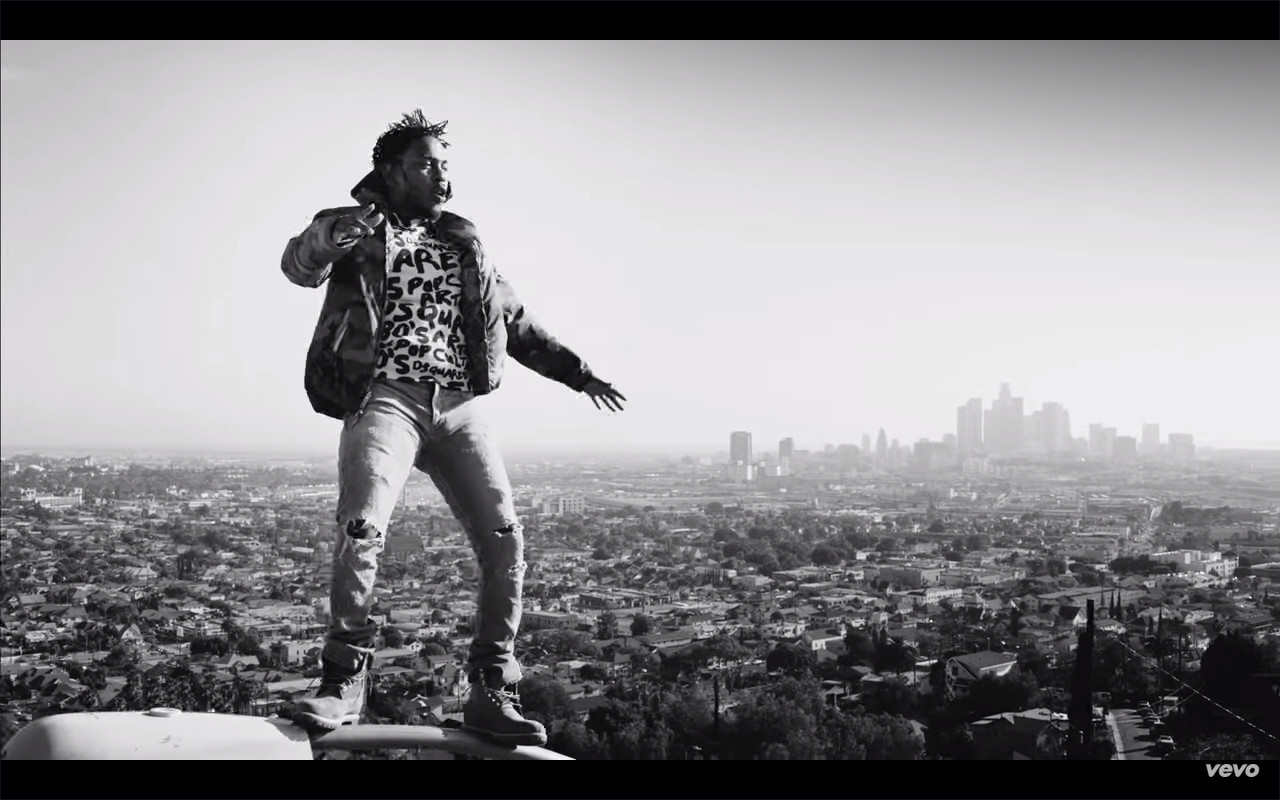 Kendrick Lamar Alright music video still
Kendrick Lamar Alright music video still
By commencing “Alright” with a profound reference to Alice Walker’s seminal novel “The Color Purple” – “Alls my life I has to fight” – Kendrick Lamar immediately establishes the song’s powerful essence: “Alright” is unequivocally a work of Black genius, emphasizing the resilience and strength inherent in the Black experience. Released as the fourth single from his critically acclaimed album “To Pimp a Butterfly,” the track quickly transcended its musical form to become an anthem of protest for a generation grappling with social injustice. In “Alright,” Lamar delves deep into the duality of the Black experience in America, exploring themes of struggle and hope. He spent six months refining the lyrics over Pharrell Williams’ production, ultimately achieving a sound he described as “uplifting but aggressive.” The song fearlessly confronts police brutality with potent and often misunderstood lyrics like, “And we hate po-po / wanna kill us dead in the street fo sho,” while simultaneously delivering an unwavering message of hope and resilience: “we gon’ be alright.”
Backseat Freestyle
One of Kendrick Lamar’s most compelling artistic instincts is his masterful command of vocal dynamics, knowing precisely when to transition from introspective flows to raw, guttural deliveries. “Backseat Freestyle” showcases this ability with maximum intensity, unleashing a snarling, aggressive energy. Produced by Hit-Boy, the track stands in stark contrast to other songs on “Good Kid, M.A.A.D. City” – it’s not aiming for the melodic introspection of “Bitch, Don’t Kill My Vibe.” This deliberate sparseness is precisely what makes “Backseat Freestyle” so impactful. Stripped down to its core, the track is a raw ode to Compton, devoid of unnecessary embellishments. The production relies on the stark clang of metal, creating a sonic landscape that emphasizes Lamar’s forceful demands for respect and his celebration of hard-earned success. He delivers a prescient warning against complacency, rapping, “My mind is livin’ on cloud nine and this nine is never on vacation,” highlighting his unwavering focus and ambition.
Bitch, Don’t Kill My Vibe
 Bitch Don't Kill My Vibe music video still
Bitch Don't Kill My Vibe music video still
By the time “Bitch, Don’t Kill My Vibe” was released as the fifth single from Kendrick Lamar’s groundbreaking album “Good Kid, M.A.A.D City,” he had already solidified his hit-making capabilities with certified bangers like “Swimming Pools (Drank)” and “Backseat Freestyle,” and a notable collaboration with Drake on “Poetic Justice.” Originally envisioned as a collaboration with Lady Gaga, the song evolved into a profound meditation on Lamar’s burgeoning status within the music industry and his artistic mindset. “Bitch, Don’t Kill My Vibe” serves as a powerful declaration of Lamar’s iconoclastic nature, offering an early glimpse into the unwavering integrity and fervent passion that would ultimately distinguish him from his contemporaries. It’s a testament to his commitment to artistic vision over fleeting trends, solidifying his position as a unique voice in hip-hop.
DNA
If there’s a defining characteristic that Kendrick Lamar has consistently demonstrated to his devoted fanbase, it’s his commitment to challenging listeners and pushing artistic boundaries. While he possesses the undeniable ability to craft commercially successful “bangers,” Lamar consistently opts to engage his audience with unexpected and intellectually stimulating music. Just when listeners thought they had him pegged after the jazz-infused soundscapes of “To Pimp a Butterfly,” he delivered “DNA,” a track that functions as a curveball within a curveball. “DNA” begins with an infectious, swampy groove that seems to bounce along conventionally, only to gradually morph into something increasingly complex and experimental. The song culminates in a sonic tapestry of disparate elements, demanding active listening and rewarding repeated engagement. Despite its sonic complexity, the lyrical content of “DNA” is remarkably direct, revealing Lamar’s profound self-awareness and early recognition of the internal conflicts that shape his artistry: “Realness, I just kill shit ’cause it’s in my DNA / I got millions, I got riches buildin’ in my DNA / I got dark, I got evil that rot inside my DNA / I got a troublesome heart inside my DNA.”
Euphoria
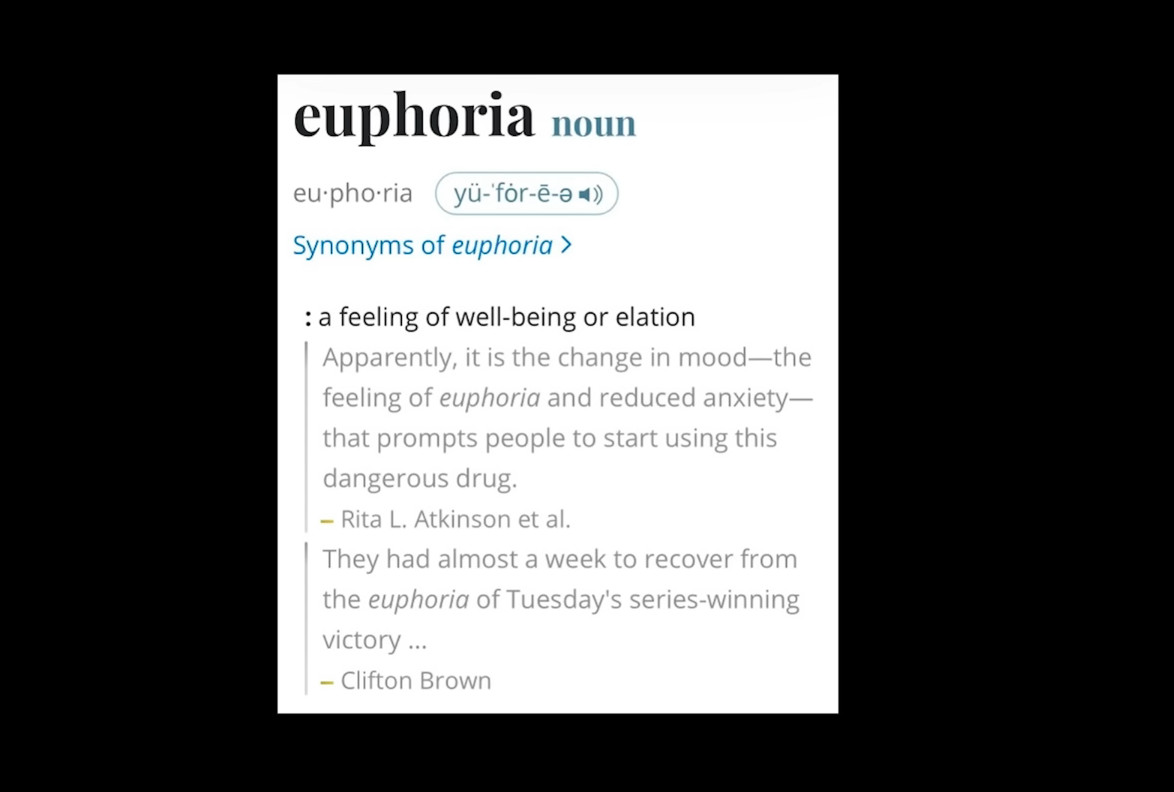 Euphoria music video still featuring Kendrick Lamar
Euphoria music video still featuring Kendrick Lamar
While “Euphoria,” Kendrick Lamar’s initial Drake diss track, may not have reached the cultural phenomenon status of “Not Like Us,” it stands as a brutally effective dismantling of the pop superstar. The track’s structure is a masterclass in escalating aggression, unfolding over three distinct and increasingly intense beat changes. “Euphoria” commences with a deceptively low-key intro, laced with veiled threats and subtle jabs: “Know you a master manipulator and habitual liar too / But don’t tell no lie about me and I won’t tell truths ’bout you.” However, the track steadily escalates into pointed and deeply personal barbs, with accusations of absentee parenting striking a particularly raw nerve: “I got a son to raise, but I can see you don’t know nothin’ ’bout that.” Each line in “Euphoria” is delivered with calculated precision, serving as a shockwave that effectively set the stage for the internet-breaking impact of “Not Like Us.”
King’s Dead
Kendrick Lamar’s curated “Black Panther” soundtrack reaches an explosive climax with “King’s Dead,” a high-energy hip-hop collaboration featuring Jay Rock and Future. While Future’s verse might deviate slightly from the thematic and narrative threads of Ryan Coogler’s film, Lamar and Jay Rock elevate the track to an epic scale befitting royalty, whether living or deceased. In fact, Jay Rock recognized the track’s power, making it the lead single for his subsequent album. Even within the context of a superhero movie soundtrack, “King’s Dead” unequivocally demonstrates Lamar’s unparalleled ability to dominate any creative challenge he undertakes, showcasing his versatility and mastery across diverse musical landscapes.
Money Trees
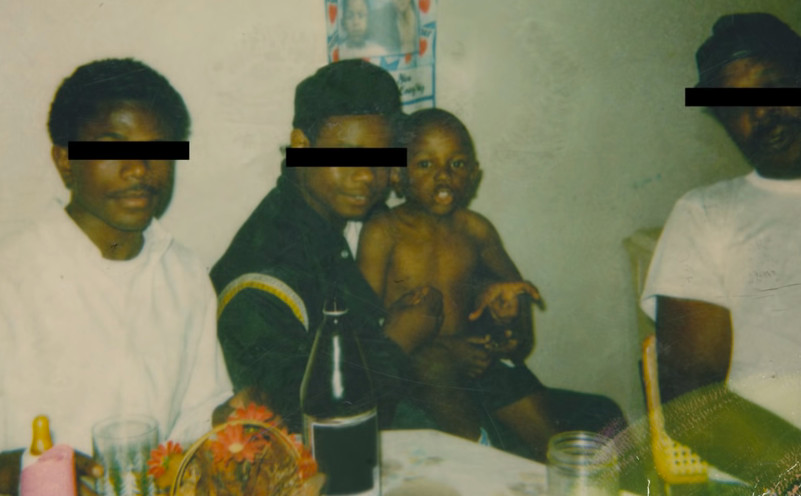 Kendrick Lamar and Jay Rock in Money Trees music video
Kendrick Lamar and Jay Rock in Money Trees music video
Set against a hazy, dreamlike beat crafted by DJ Dahi and Hit-Boy, Kendrick Lamar’s “Money Trees” evokes a potent sense of nostalgia that permeates “Good Kid, M.A.A.D City.” The track is deeply rooted in the dual obsessions of music and tragedy, seamlessly weaving in references to Usher and E-40 amidst stark depictions of street violence. The chorus delivers a profound and hauntingly resonant theme that echoes throughout the entire album: “Everybody gon’ respect the shooter / But the one in front of the gun lives forever.” Jay Rock’s featured verse is a career highlight, delivering urgent and visceral rhymes about the realities of drug dealing, filled with specific details that could serve as a blueprint for a illicit enterprise.
Not Like Us
Even before it garnered five Grammy Awards, “Not Like Us” was already cemented as an instant classic within Kendrick Lamar’s illustrious catalog of timeless hits. The track is laser-focused in its targets – primarily Drake – but it also resonated deeply with a fervent fanbase of West Coast hip-hop who had been yearning for a ubiquitous anthem for years. “Not Like Us” effectively filled this void, showcasing the collaborative brilliance of Lamar and DJ Mustard at the peak of their creative powers, each operating within their respective zones of expertise. Built upon a foundation of aggressively syncopated rhythms, the beat is clean, minimalistic, and undeniably West Coast. Lamar’s feverish rapping style, often pushing ahead of conventional phonetic patterns, further solidifies the track’s distinctly West Coast sonic identity. The resounding success and enduring freshness of “Not Like Us” offer valuable lessons, but perhaps the most crucial takeaway is the power of embracing one’s inner critic and channeling that energy into creative fuel.
Poetic Justice
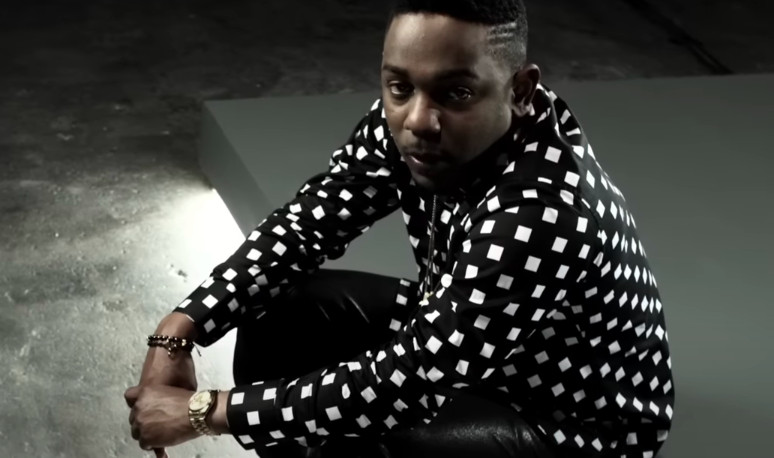 Drake and Kendrick Lamar in Poetic Justice music video
Drake and Kendrick Lamar in Poetic Justice music video
Framed by a sample of Janet Jackson’s honeyed vocals from “Any Time, Any Place,” “Poetic Justice” featuring Drake stands out as arguably the sole love song on “Good Kid, M.A.A.D City” – and it’s a truly exceptional one. As one of Lamar’s most commercially successful tracks to date, “Poetic Justice” undeniably benefits from the timeless sensuality of Jackson’s original sample. Once listeners move past the presence of the now-estranged Drake, the song reveals a genuine chemistry between the two artists. However, the true brilliance of “Poetic Justice” lies in its striking and poetic one-liners, such as the evocative question: “If a flower bloomed in a dark room would you trust it?”
Rich Spirit
Anchored by a chorus featuring the assertive lyric, “Stop playin’ with me ‘fore I turn you to a song,” Kendrick Lamar’s “Rich Spirit” from “Mr. Morale & the Big Steppers” served as a potent FAFO (fuck around and find out) warning. This warning would manifest in reality two years later with his historic and Grammy-winning feud with Drake. However, “Rich Spirit” also functions as a form of self-admonishment, particularly within the context of verses where Lamar grapples with his accomplishments and the escalating complexities of his responsibilities within the music industry. He reflects on his evolving relationships with confidantes, collaborators, and even supposed loved ones, as highlighted by the line, “And my cousin tried to sue me like he got the privilege.” Ultimately, “Rich Spirit” underscores how success, while outwardly desirable, inevitably introduces layers of complication and scrutiny into Lamar’s life and relationships.
Rigamortus
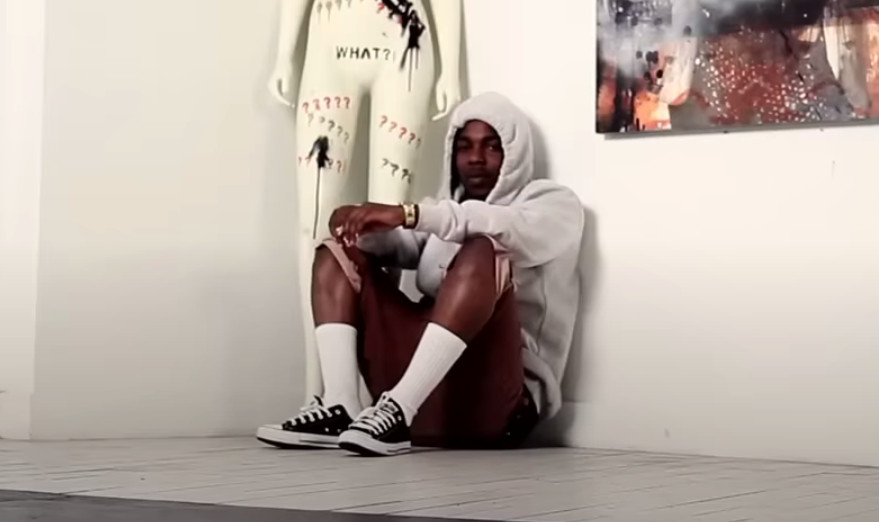 Kendrick Lamar in Rigamortus music video
Kendrick Lamar in Rigamortus music video
“Section.80” served as a crucial introduction to Kendrick Lamar for listeners who had not yet encountered the raw talent and artistic spark of his mixtape era. His 2011 debut album effectively crystallized his foundational strengths as an emcee – his ability to seamlessly navigate the pain and harsh realities of street life while simultaneously acknowledging the allure of the vices associated with escaping such circumstances. “Rigamortus” skillfully finds a middle ground by foregrounding Lamar’s exceptional lyrical dexterity, serving as a clear warning to his rap peers that his wordplay is a formidable weapon. He doesn’t just assert his lyrical prowess; he demonstrates it with breathtaking agility, skating across the horn-driven instrumental, effortlessly manipulating double and triple meter while delivering sharp, cautionary rhymes at every turn. If there is a definitive starting point for the ascent of Kendrick Lamar, “Rigamortus” undeniably marks a significant moment in his trajectory.
Swimming Pools (Drank)
Kendrick Lamar was still a relatively nascent artist, making his debut on Interscope Records, when he released “Swimming Pools (Drank),” an introspective party anthem that belies its surface-level appeal. In this track, Lamar fearlessly tackles the pervasive issue of alcohol abuse through his intricate rhyme schemes. In retrospect, “Swimming Pools (Drank)” stands as a clear and significant precursor to Lamar’s widely recognized politically charged and socially conscious approach to rap music. From the outset, he establishes the seductive allure of alcohol: “Some people like the way it feel / Some people wanna kill their sorrows / Some people wanna fit in with the popular.” However, midway through the song, Lamar introduces a critical shift in perspective, injecting a cautionary voice of conscience. By the song’s conclusion, “Swimming Pools (Drank)” unfolds as a deeply personal and cautionary narrative, reflecting a cyclical pattern of violence and self-destruction prevalent in communities like Compton.
TV Off
While “TV Off” may be characterized as more lighthearted and less lyrically dense than the Pulitzer Prize-winning work we’ve come to expect from Kendrick Lamar, it remains an undeniably irresistible and catchy victory lap of a song. Beginning with a sample from MacArthur Park’s “Monk Higgins,” Lamar delivers an energetic call to action against conformity, urging listeners to “turn the TV off” as a means of resisting unconscious manipulation and societal influence. From its triumphant horn section to the meme-worthy vocal exclamations of “Mustaaaaaaaaaard!” and “Crazy, scary, spooky, hilarious,” “TV Off” builds upon the immense success of “Not Like Us,” showcasing another classic collaboration with producer DJ Mustard.
untitled 05 | 09.21.2014.
Kendrick Lamar’s lyrical craftsmanship is razor-sharp on “untitled 05 | 09.21.2014.,” a bleak and unflinching lament on class disparities and desperation. In the song’s opening verse, Lamar portrays a character teetering on the brink of despair: “Once upon a time I used to go to church and talk to God / Now I’m thinkin’ to myself, hollow tips is all I got.” This character commits a shocking act of violence, set against a backdrop of a jazzy chorus from Anna Wise and a haunting Thundercat bassline. Lamar’s vocal delivery is raw and emotionally charged, and the subsequent verses, passed to Punch and Jay Rock, only amplify the track’s intensity. Even within the context of a demo album, lines like “Justice ain’t free, therefore justice ain’t me / So I justify his name on obituary” resonate deeply, serving as precise thematic throughlines that recur throughout Lamar’s extensive storytelling.
XXX
In “XXX.,” Kendrick Lamar boldly tackles the complexities of the American Dream and the role of religion in contemporary society. He skillfully shifts his flow to match the track’s multiple beat variations. The latter portion of the first verse finds Lamar in a breathless, rapid-fire delivery as he raps about the futility of offering comfort to a friend grieving the loss of a child killed over money: “’I can’t sugarcoat the answer for you, this is how I feel / If somebody kill my son, that mean somebody gettin’ killed,” he raps, as the ominous sound of police sirens threatens to engulf the beat. The song then transitions into a jazzy and more contemplative vibe, featuring a thematically resonant verse from Bono. “XXX.” is overflowing with grand ideas and sweeping social commentary: “It’s murder on my street, your street, back streets, Wall Street / Corporate offices, banks, employees, and bosses with / Homicidal thoughts, Donald Trump’s in office.”
Kendrick Lamar’s impact on music is undeniable. These songs are not just hits; they are cornerstones of a generation, reflecting complex realities and pushing the boundaries of rap music. Exploring these tracks offers a profound understanding of why Kendrick Lamar is considered one of the best and most important artists of our time.


